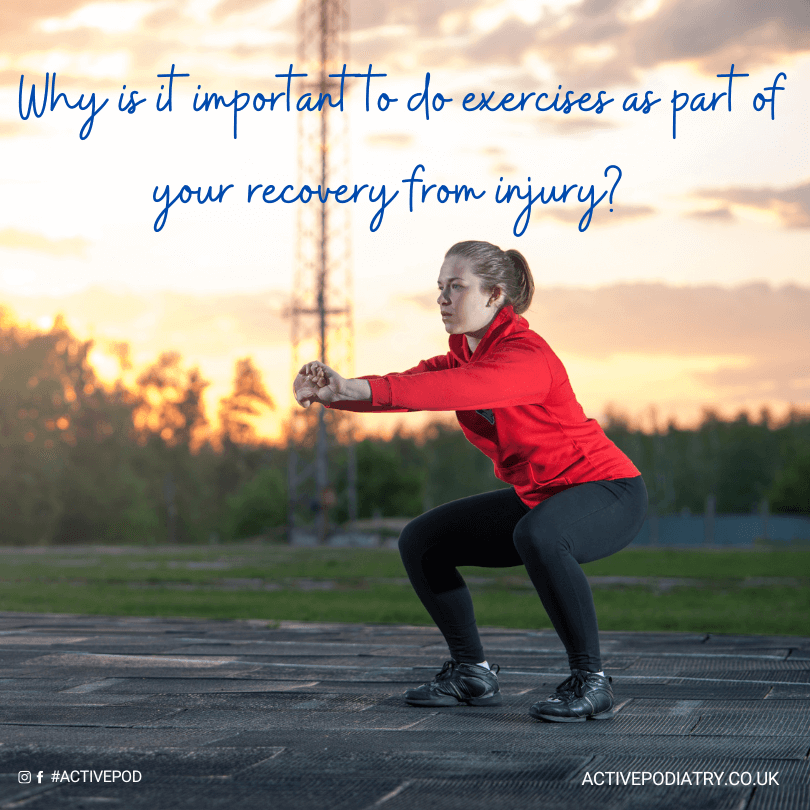Why is it important to do exercises as part of your recovery from injury?

Last year I found myself in the position of having to do the exercises that I regularly give to my patients, as I injured my calf while out running. I found out that, yes, exercises are repetitive and boring! And of course as a result I didn’t want to do them, but I also understood objectively that doing the exercises would help me to recover more quickly, and so it was. A dose of your own medicine is no bad thing as it has made me more empathetic towards my patients who have to do these exercises repetitively day after day!
So the obvious question is, why should you have to do these exercises at all? Won’t things just get better with rest?
The answer is, yes they will, but the injured muscle or tendon will heal in a weakened state with reduced capacity, meaning it is more likely to get injured again in the future. And we k now from the evidence that one of the most common causes of running injury is if there has been a history of the same injury in the past. So building strength in that injured tissue is likely to significantly reduce your risk of the same injury recurring in the future.
Apart from the above, there are some other good reasons to do strength exercises after injury.
Pain relief. This may seem surprising as you would think that applying load to an injury would make it more painful. But the evidence suggests that applying load in a controlled and progressive manner can actually relieve pain over time, as the tissue increases its load capacity and is therefore less vulnerable to stress which increases pain.
Reduced tightness. Injured and weakened muscles can often feel unpleasantly tight. Stretching can help in the short term, but by strengthening you increase the functional length of the muscle, making it less likely to tighten up after exercise.
Endurance. With a stronger muscle you can go longer without fatigue setting in, so a good time to plan that long hike or marathon bid.
At the end of the day, rehabilitation exercises can be repetitive and a bit dull, but sticking with it and forming good habits can help you to achieve your fitness goals more consistently in the long term.
As part of your recovery plan following an injury, I always prescribe a simple progressive exercise plan to build strength control and flexibility in the injured area. This always comes with an accompanying exercise sheet and instructional videos which you can download on to your smartphone, helping you to do the exercises consistently and well to get the best outcomes.